Animation Tutorial
Dances with Cactii
In this tutorial, we will export from Lightwave an animated scene and then import the result to Jot.
Load the lightwave scene in Ligthwave.
C:\ cd JOT_ROOT C:\ cd manual\tutorials\tutorial-4\lw_files C:\ lightwav.exe cactus_dancing.lws
Manually indicate to Lightwave the location of object file: manual\tutorials\tutorial-4\lw_files\cactus_dancing.lwo.
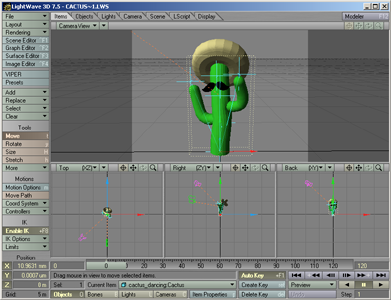
Cactus model loaded in Lightwave.
If this is the first time you are exporting from Lightwave to Jot, load the Jot Export plugin
In the Layout menu, select Plug-ins > Add Plug-in
Navigate to the file "Jot Export.p", located in scripts\lw2jot.p. Click "Ok".
Click "Ok" in the Information dialog.
Start the Jot Export plug-in, from the Layout > Plugins > Generic menu.
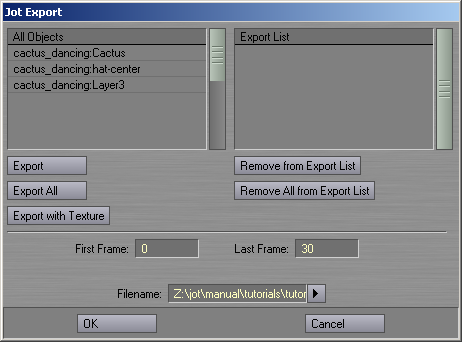
Lightwave GUI.
The left-hand list ("All Objects") shows a list of objects in the scene, and, if the object is textured, the number of textures on that object.
To export geometry but not texture information:
Select the object you wish to export from the "All Objects" list. Click Export. This will move the object you have selected from the "All Objects" list to the "Export List", and will disregard any textures belonging to that object.
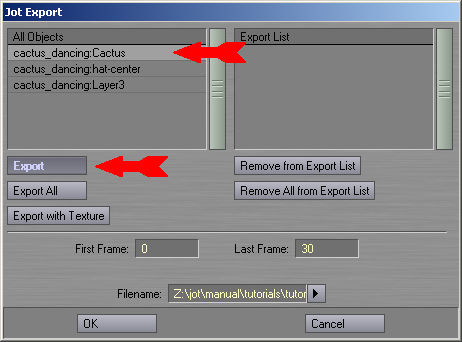
Lightwave GUI.
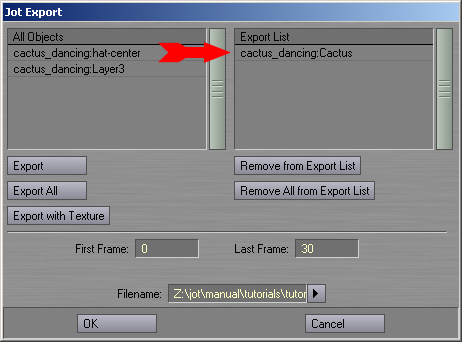
Lightwave GUI.
Alternately, to export all objects (without texture information), click Export All. This will move all objects in the "All Objects" list to the "Export List", and will disregard any textures belonging to these objects. Objects already exported with textures will remain unchanged.

Lightwave GUI.
To export geometry with texture information:
Select the object you wish to export from the "All Objects" list (it must be an object with at least one texture). Click the Export with Texture button.
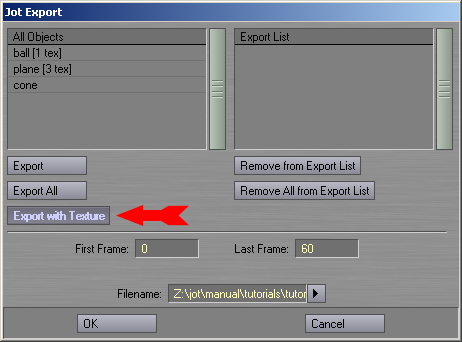
Lightwave GUI.
If the object has more than one texture, you must choose one to be exported with the object from the dialog box that appears.
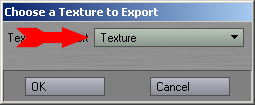
Lightwave GUI.
The object now appears in the "Export List", with "+ tex" after it to indicate that this object is being exported with texture coordinates.
Enter the starting frame in the First Frame field, and the final frame in the Last Frame field. The scene will be exported including both the first and last frames.

Lightwave GUI.
Enter a filename to save the exported scene as. The extension of the file will be changed to ".jot" regardless of what extension is entered here. Additionally, potentially many other files will be created during the export, so you may want to create a directory to save the exported files in.
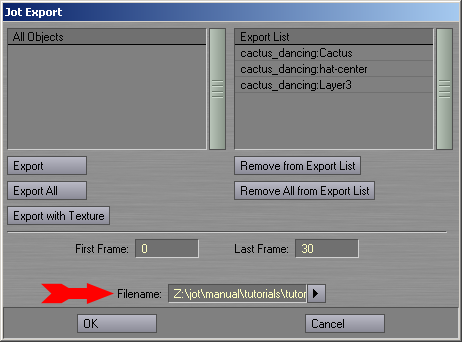
Lightwave GUI.
Click "Ok". The frame slider will move from the first frame to the last frame you entered, and you will see your scene animated as it is exporting. A dialog box will alert you to the end of the export process.
Now import the exported files in directory manual\tutorials\tutorial-4\jot_files into Jot. (A copy of the files which should have exported into the directory manual\tutorials\tutorial-4\jot_files is provided in manual\tutorials\tutorial-4\jot_files.bak.)
C:\ cd JOT_ROOT C:\ cd manual\tutorials\tutorial-4\jot_files C:\ jotq cactus_export.jot
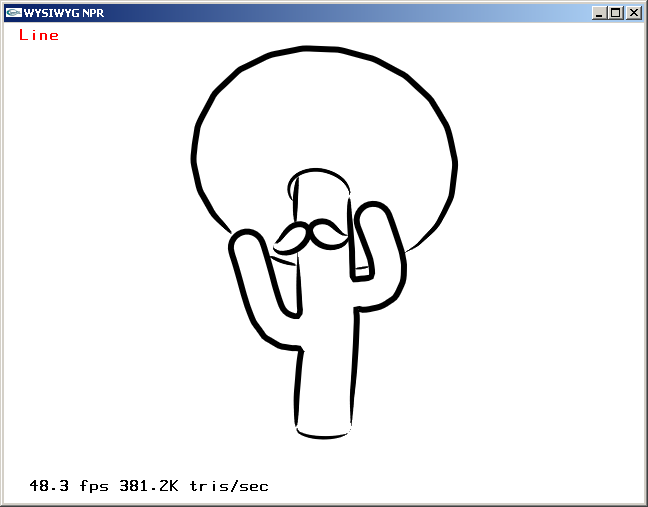
Cactus model with default style.
The various components of the cactus can be stylized using the techniques demonstrated in the previous tutorials. You may stylized this cactus and save the result by pressing s. However, manual\tutorials\tutorial-4\jot_files.npr contains another copy of the exported files which already have been stylized.
C:\ cd JOT_ROOT C:\ cd manual\tutorials\tutorial-4\jot_files.npr C:\ jotq cactus_export.jot
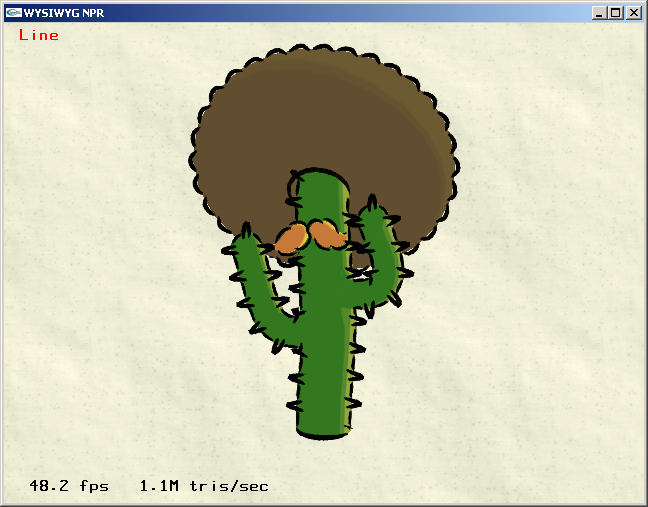
Cactus model with npr style.
To access the other frames of the animation, engage Animator Mode by pressing X. (WYSIWYG NPR rendering window must have focus to receive keystroke commands.)

Cactus model with Animator Mode ON.
Step through the frames using the numeric keypad: 4 and 6 step backward and forward by one frame; 2 and 8 step backward and forward by ten frames; 5 returns to the first frame.
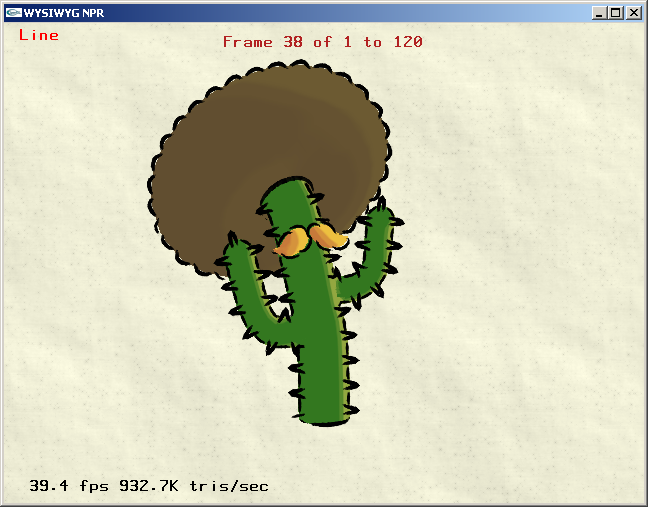
Stepping through the frames of the cactus animation.
To play back the entire animation, press /. Press + to stop. (Each frame is loaded from disk, so playback is slooow. Don't ask...)
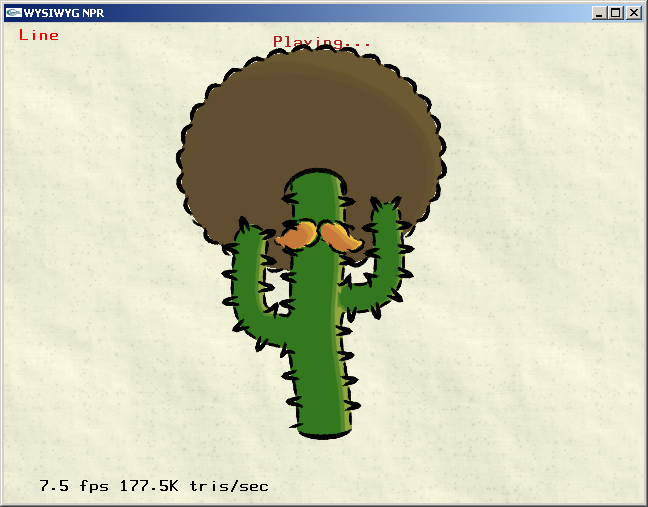
Playing the cactus animation.
To render frames to disk, engage time sync with - and render mode with *.
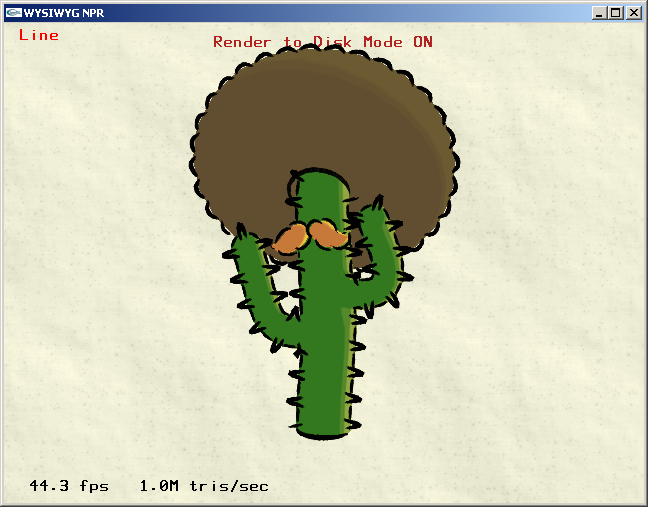
Engaging render to disk mode.
Pressing / now with render to disk mode on will play back the frames and render them to disk. (A DivX movie file of these frames is provided: manual\tutorials\tutorial-4\jot_files.npr\cactus_export.avi).
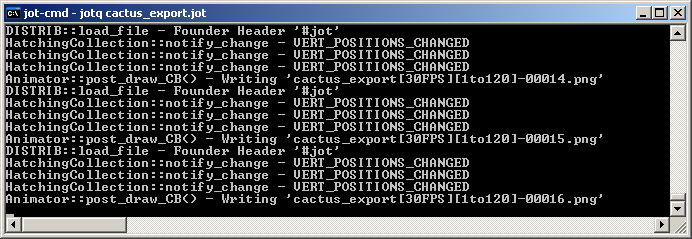
Frames are rippen to disk.